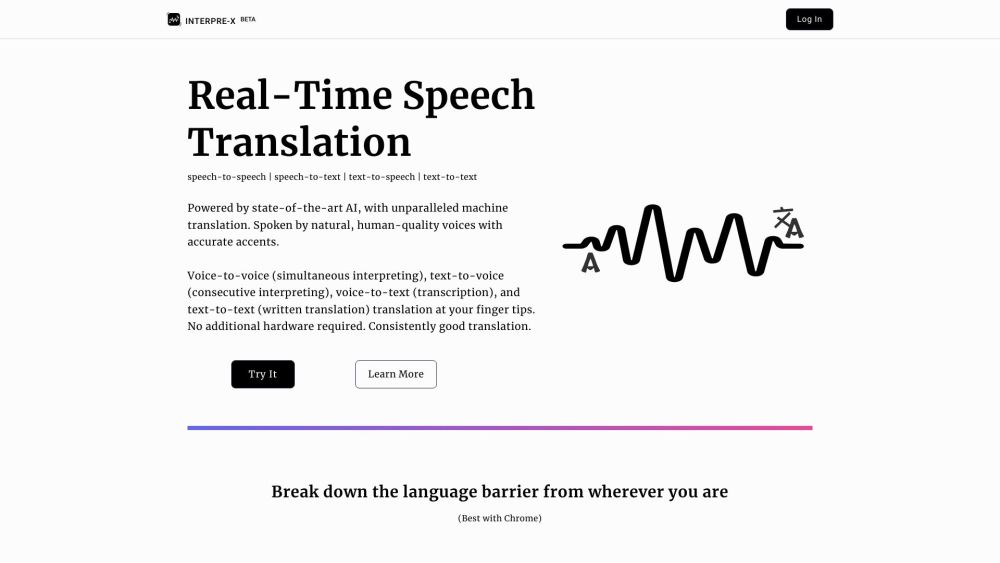FAQ About Interpre-X
What Exactly is Interpre-X?
Interpre-X is a web-based solution offering real-time translation in over 10 languages. It uses AI-driven technology to facilitate speech-to-speech, speech-to-text, text-to-speech, and text-to-text translations, all delivered with lifelike voices and high accuracy.
How Can I Use Interpre-X?
Simply navigate to the website via Chrome or another compatible browser and select the appropriate translation mode based on your requirements. Whether you’re exploring international destinations, studying a new language, or conversing with non-native speakers, Interpre-X ensures smooth communication without any additional devices—just a reliable internet connection.
Which Languages Are Supported by Interpre-X?
Interpre-X currently supports English (UK & US), Mandarin Chinese, Japanese, French, German, Italian, Portuguese (Portugal & Brazil), Russian, and Spanish.
How Accurate Is Interpre-X’s Speech Recognition?
With an estimated accuracy rate exceeding 80%, Interpre-X delivers dependable real-time speech recognition.
Why Choose AI-Powered Interpretation Over Traditional Methods?
AI-powered interpretation offers numerous advantages, including consistent quality, round-the-clock availability, accessibility across multiple formats (speech-to-speech, speech-to-text, etc.), cost efficiency, and minimized errors compared to traditional methods.
What’s the Difference Between Interpretation and Translation?
While both involve converting content from one language to another, interpretation focuses on spoken communication in real time, whereas translation pertains to written material. Interpretation works well for live conversations or group settings, while translation is ideal for documents and written texts. Both require strong linguistic skills and cultural awareness.
What Distinguishes Simultaneous From Consecutive Interpreting?
Simultaneous interpreting happens concurrently as the speaker talks, making it suitable for formal events or large gatherings. On the other hand, consecutive interpreting involves taking notes and delivering the message after the speaker finishes, which is better suited for smaller groups or individual discussions.
